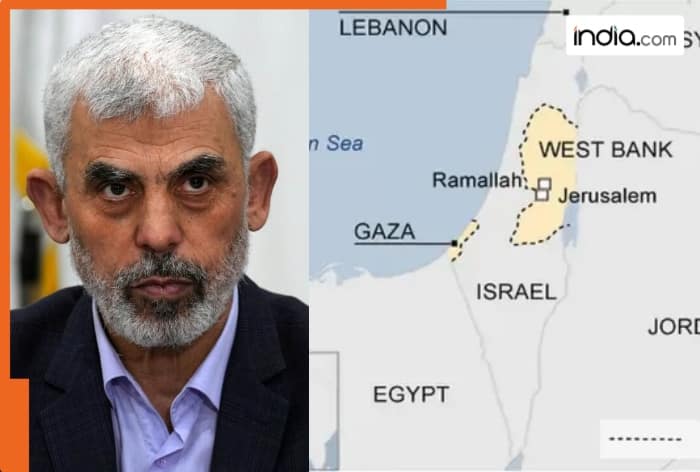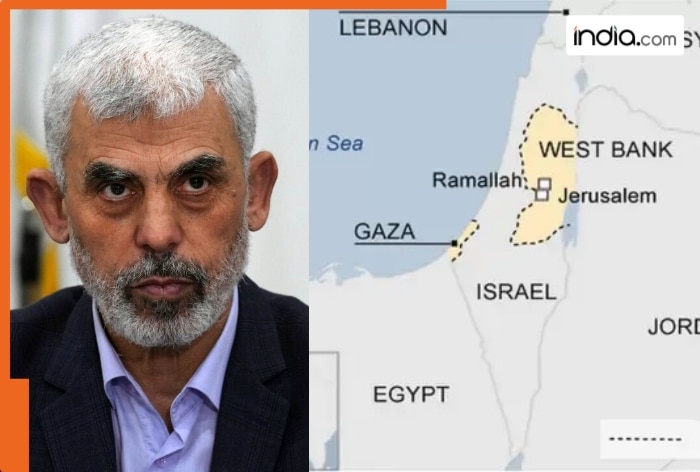The real impact of Sinwar’s death lies in what happens next.

New Delhi: On October 17, Israel concluded its yearlong pursuit of Yahya Sinwar, a top Hamas leader and one of its most wanted targets. While the outcome did not meet all expectations, Sinwar’s death carries significant consequences. It could influence not just the conflict in Gaza, but also shape Israel’s actions in Lebanon and impact its planned operations against Iran.
The real impact of Sinwar’s death, which took place in a bombed-out house in southern Gaza, lies in what happens next. The focus now shifts to the fate of 101 hostages held by Hamas in tunnels beneath Gaza. Many of these captives are feared to have lost their lives, raising questions about their remains and what might happen to the survivors.
Sinwar’s death has sparked hopes that efforts to secure the release of the hostages might finally make progress. However, it has also brought new fears and uncertainties about what might happen next.
On the night of October 17, in a televised speech, Prime Minister Netanyahu assured those holding the hostages that they would be safe if they put down their weapons and released the captives.
The families of the hostages are asking the government to offer cash rewards for any information that could help find their loved ones. At the same time, they are worried that those holding the hostages might retaliate for Sinwar’s death by killing them.
Israeli intelligence officials believe that Hamas will likely appoint Mohammad Sinwar, Yahya Sinwar’s brother, as his replacement. They warn that Mohammad is even more radical than his late brother.
A senior Israeli security official, speaking anonymously to Al-Monitor, said that Israel must recognize the importance of this moment and act quickly to make the most of it. We have made progress and achieved positive outcomes on all fronts. Now, we need to find a way to build on this momentum and work toward ending the conflict.
The security official suggested that a broader plan could be considered, possibly involving Iran. Alternatively, a separate agreement could aim to halt the fighting in both Gaza and Lebanon. Hezbollah’s leader, Hassan Nasrallah, is no longer active, and those who might take his place are too afraid to reveal their identities. This is a rare opportunity that may not come again.
Israeli forces discovered Sinwar purely by chance. There was no prior intelligence pointing to his presence in the Tel Sultan neighborhood of Rafah. He wasn’t located through the use of precision-guided missiles, nor was there any commando team descending from helicopters to capture him. It was an unexpected encounter, not the result of a planned or high-tech operation. Instead, Sinwar was stumbled upon by trainees from an infantry company commanders’ course. They were supported by several tanks and a unit of reserve soldiers, making the discovery purely accidental rather than part of a planned mission.
The troops were carrying out yet another routine search of what was believed to be a Hamas hideout. This operation was pushed by Brig. Gen. Yaron Finkleman, head of the Southern Command, who suspected that Sinwar might be hiding somewhere nearby.
An artillery shell killed Sinwar after he took cover in a room following a gunfight with an Israeli patrol. It wasn’t like the massive strike that involved 83 precision-guided JDAM bombs, which crushed Nasrallah in Beirut on September 27. Nor was it similar to the 10 tons of explosives used to eliminate Mohammed Deif, the Hamas military commander, in Gaza earlier. It also differed from the targeted strike in Tehran, where specific intelligence helped locate and kill Hamas leader Ismail Haniyeh in July.
In late August, Hamas killed six Israeli hostages in a tunnel near the area where Sinwar was later found. At that time, the military did not realize that Sinwar had been using the hostages as human shields.
After the hostages’ bodies were found, DNA evidence at the site confirmed Sinwar had been there. This strengthened Finkelman’s belief that Sinwar was still in the area. Despite advice to pull his troops out, Finkelman chose to stay, even though most Israeli forces had already left Gaza to focus on the Lebanese front.
In the Tel Sultan area, a group of soldiers noticed three people coming out of a building. They immediately killed two of the individuals, but the third person managed to escape and ran back into the building.
The soldiers decided to wait until daylight to find out what happened to the third person. Once it was light, they sent a small drone into the building to investigate. The soldiers held off until morning to check on what happened to the third person. When it was light, they used a small drone to search the building. The drone’s camera spotted a masked man sitting on a sofa. He seemed injured but was still able to throw a stick at the flying drone. The man’s attempt to hit the drone failed, but the tank that fired a shell into the building was successful in its target, striking the building.
The soldiers entered the building and approached the body, not thinking they would see someone familiar. Suddenly, one of them spoke up, “Hey guys, doesn’t this guy look just like Sinwar?”
Once the soldiers cleared the area of booby traps, Sinwar’s body was transported to Israel for confirmation. The identification process took place at the country’s main forensic laboratory to ensure accuracy. A sample of his DNA had been kept in Israel’s records, collected during the 23 years he was imprisoned there. During his time in custody, he also underwent surgery that saved his life. A finger from the body was removed and sent to the Israel Prison Authority’s lab to compare it with fingerprint records stored there for identification.
The soldiers were shocked when they discovered it was Sinwar. One of them said, “It hit us suddenly—we realized that it was our mission, and we were the ones who killed him.”
“There’s no better feeling,” one of them told Channel 12 News, according to AL-MONITOR. Prime Minister Benjamin Netanyahu described the event as a major strike against evil in a short televised message on the night of Thursday, October 17.
Sinwar was the last major Hamas leader still in power, as Israel had already killed all of his predecessors in Gaza along with some leaders of Hamas living in exile. The big question now is: What’s next? Will Sinwar’s death push Hamas to agree to release hostages and work towards ending the conflict? Is there anyone left on the Palestinian side to negotiate with? Will Netanyahu decide that it’s time to end the war? And if the war ends, how will that impact the ongoing conflicts with Iran and its allies?
Netanyahu’s hardline partners in the government are still demanding that Israel keep fighting until Hamas is completely defeated. Netanyahu’s popularity, which had been very low since October 7, has started to improve. Polls show this, and experts believe that killing Sinwar will likely boost his support even more.
Netanyahu seems torn between celebrating recent military and political victories and worrying about getting dragged into a conflict with Iran. At the same time, he faces pressure within his government over a controversial law that would exempt ultra-Orthodox men from military service. Ending the war would likely mean Netanyahu would have to appear in court in December to testify in his ongoing corruption trial, which had been postponed because of the war.
Netanyahu has bounced back with renewed energy after the major failure that happened under his leadership on October 7. Based on his statements, he aims to reshape the situation in Lebanon and push world powers to pressure Iran into giving up its nuclear ambitions. According to political sources, Netanyahu is considering delaying retaliation against Iran for its missile attack on October 1, possibly waiting until after the U.S. elections.
Sources indicate that if former President Donald Trump returns to power, Netanyahu might try to strike a deal with the White House. In this deal, Israel would hold back from responding, in exchange for the U.S. launching an attack on Iran’s nuclear program.
These hopes and plans for Trump’s return suggest that Netanyahu is regaining his confidence and returning to his usual self.

